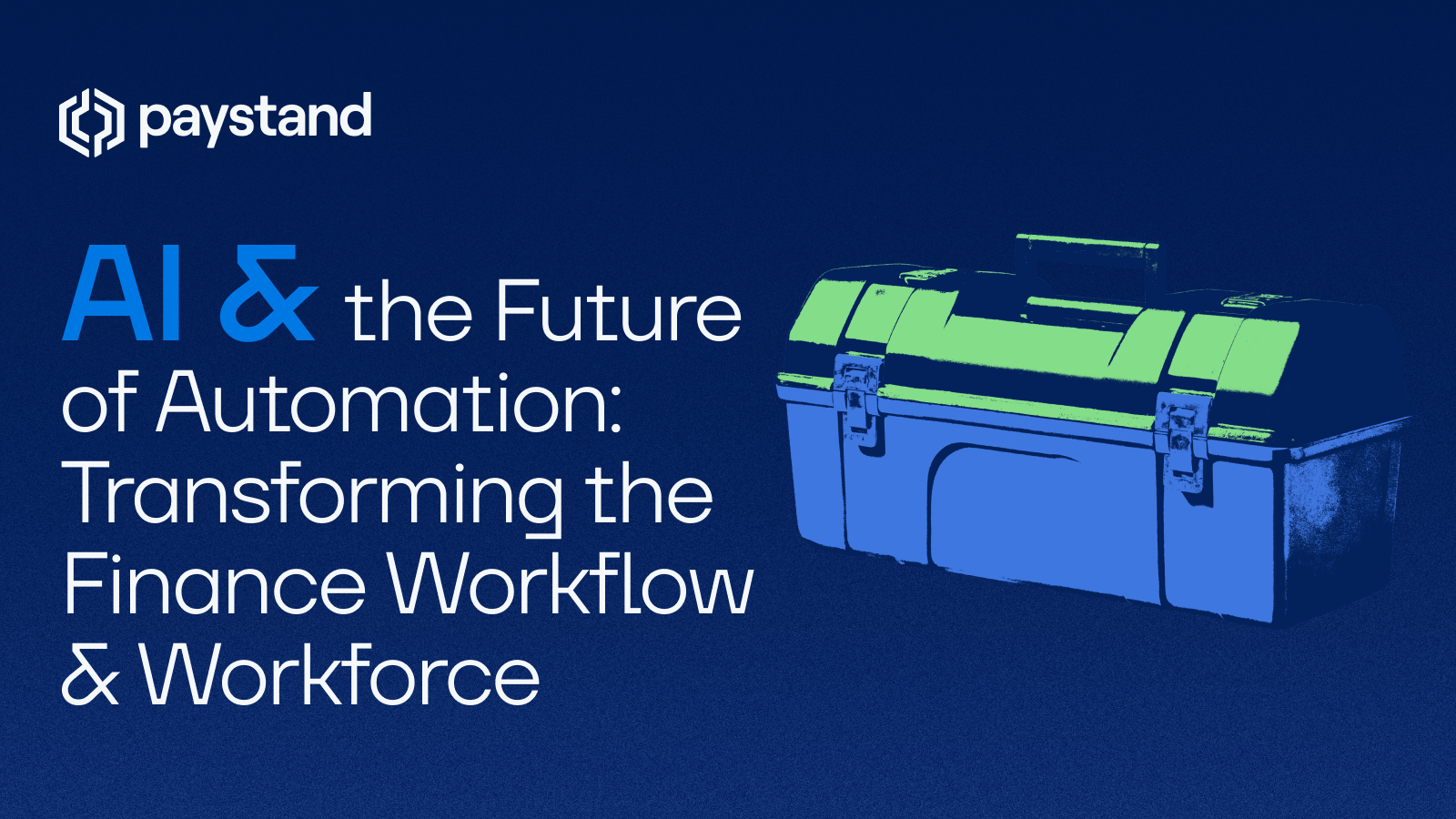AI & the Future of Automation: Transforming Finance Workflows

Table of Contents
- AI vs. Automation
- How AI Supercharges Automation
- Who Benefits From AI + Automation
- The Future of AI in Finance
- Shifts in the Workforce
- Accounts Receivable: A Key Use Case
- Managing Risk and Bias
Key Takeaways
- AI can reduce manual reporting by 70% and cut costs by 80%+.
- It doesn’t replace jobs — it frees teams to focus on strategy, not clerical tasks.
- Automation gets smarter with AI, enabling forecasting, anomaly detection, and real-time insights.
- AR/AP, forecasting, supply chain, customer service, and healthcare are among the biggest winners.
- Repetitive finance work is fading, but advisory roles will grow.
- Strong governance and oversight are essential to ensure fairness and accuracy.
Finance teams face rising costs, compliance burdens, and a shrinking talent pool. AI is helping to bridge the gap by automating repetitive, rules-based work.
One finance leader reported cutting manual reporting by 70% and lowering operational costs by 82% after adopting AI in accounting. Instead of wrangling spreadsheets for weeks, their team now updates forecasts in real time, freeing up time for strategic decisions.
AI vs. Automation
- Automation handles predictable workflows: routing invoices, creating journal entries, sending reminders.
- AI adds intelligence: learning from patterns, spotting anomalies, predicting late payments, and even flagging fraud.
As Josh, Founder and CEO of Mighty Digits, put it:
“The most valuable service finance can provide is strategic insights. The more time you can free from manual work, the more time you have to guide the company’s direction.”
In short: automation creates efficiency, AI unlocks foresight. Together, they shift finance from recording the past to shaping the future.
How AI Supercharges Automation
Automation executes; AI adapts. For example:
- Automation sends payment reminders.
- AI prioritizes which accounts to follow up with based on payment history.
- AI payment processing speeds up cash application and payment reconciliation
This pairing reduces errors, accelerates reconciliations, and surfaces real-time insights into cash flow.
Who Benefits From AI + Automation?
AI-powered automation can help across a variety of industries:
- Finance & Accounting: FP&A, AR/AP, forecasting, reconciliations with finance workflow automation.
- Customer Service: NLP chatbots cut wait times and save billions annually.
- Supply Chains: AI-driven demand forecasting and smarter logistics.
- Healthcare: Faster diagnostics and reduced administrative burdens.
Wherever repetitive, data-heavy work exists, AI can transform it.
The Future of AI in Finance
In the next 2–5 years, many transactional finance tasks will be automated, think reconciliations, invoice matching, reporting. But the strategic, advisory side of finance will only grow.
Josh summed it up well:
“Most finance and accounting tasks will likely be automated in the next 2–5 years. What won’t be replaced is advisory work and strategic decision-making.”
AI copilots embedded in ERP and financial systems are already becoming the norm, turning software into proactive assistants that flag risks and surface insights in real time.
Shifts in the Workforce
AI won’t erase jobs but will reshape them. Entry-level clerical roles may shrink, while new opportunities in analysis, oversight, and AI strategy emerge.
As with spreadsheets in the ’80s, professionals who adapt to this shift, learning to interpret and apply AI outputs, will thrive. Those who resist risk being left behind.
Accounts Receivable: A Key Use Case
AR remains one of finance’s most manual functions. AI is now:
- Reading invoices and assigning GL codes.
- Auto-matching payments to invoices.
- Flagging mismatches and forecasting payment delays.
One leader shared: “We used to spend a week organizing NetSuite data by location. Now AI assigns it automatically, and we update forecasts in real time.”
The payoff: fewer errors, faster collections, and healthier cash flow.
Managing Risk and Bias
AI’s upside comes with risks:
- Data privacy: Sensitive financial data must be safeguarded.
- Bias: AI trained on flawed data can perpetuate unfair outcomes.
- Over-reliance: Humans must validate outputs and maintain oversight.
“You can’t just copy-paste from an AI tool,” one finance leader noted. “You need audit trails, policies, and people with financial knowledge to validate outputs.”
Strong governance ensures AI drives efficiency without sacrificing trust.
AI and automation are no longer optional. They’re already reshaping finance. The leaders who thrive will:
- Automate repetitive work.
- Equip teams with AI-driven tools.
- Build governance into every use case.
- Upskill staff for strategic, forward-looking roles.
Forward-looking CFOs are adopting copilots such as Microsoft’s Copilot for Dynamics 365 Business Central, which embeds AI directly into ERP systems, redefining how people work in finance.
The future of finance belongs to those who combine AI’s precision with human judgment. With the right adoption strategy, finance teams can truly do more with less, and lead their organizations into the future.
Download our free eBook: AI and Blockchain: Powering the Future of Finance







%20(1)%20(1).jpg?width=100&height=100&name=IMG_3752%20(1)%20(1)%20(1).jpg)